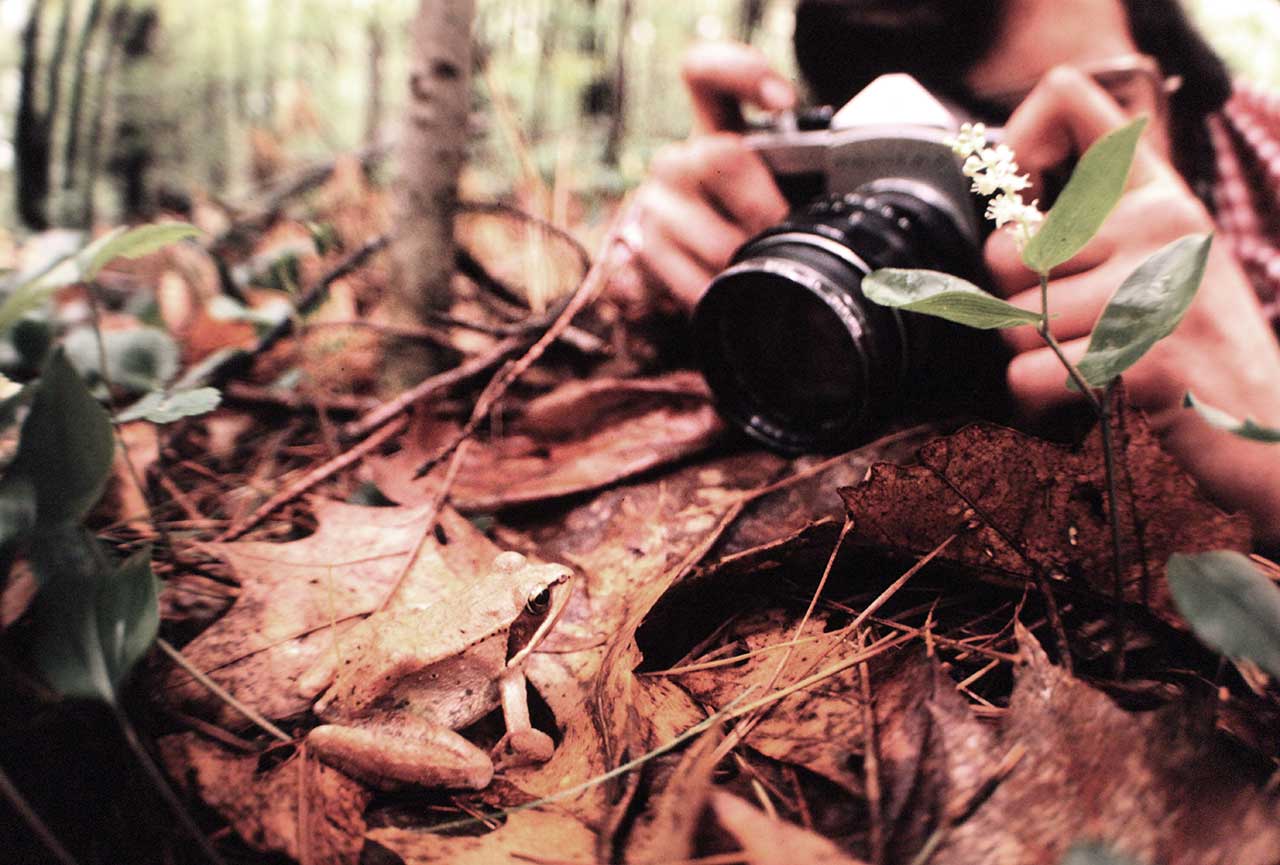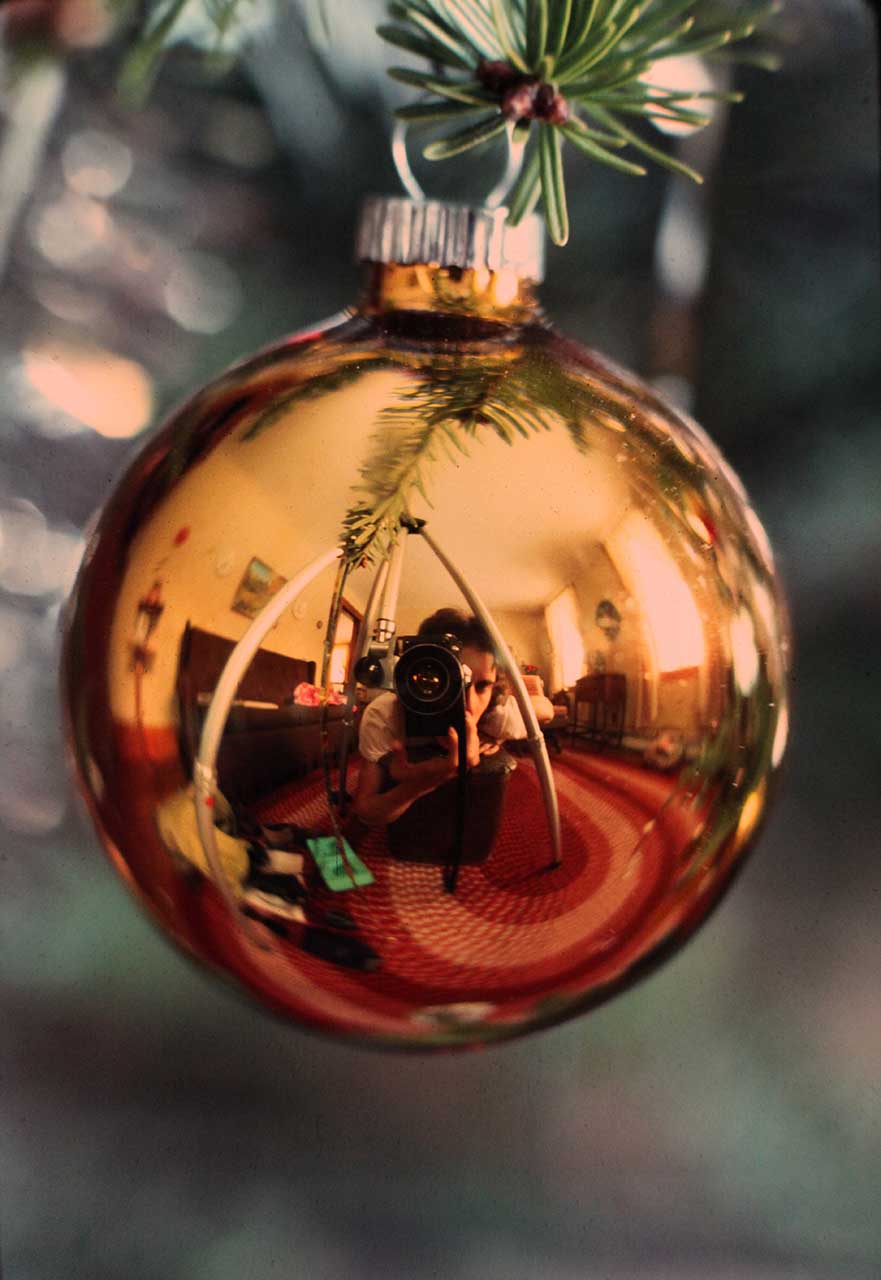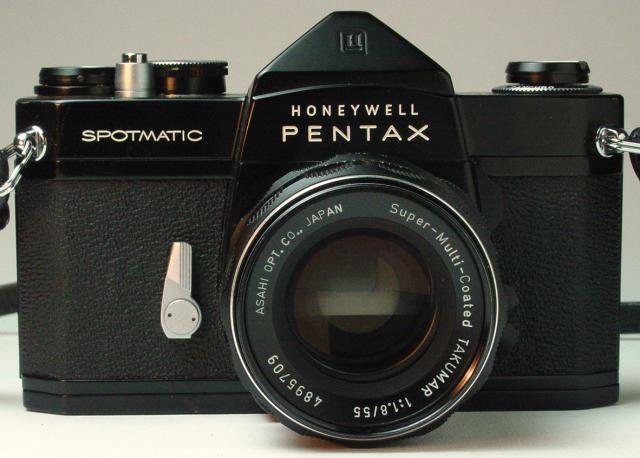My 35mm SLR
Camera Ownership History
I am a longtime user of the
Asahi (and Honeywell)
Pentax Spotmatic-family of cameras. I started my use of SLRs with the
Hanimex Praktica Nova 1B.

When this proved to have
limitations (external selenium meter of dubious accuracy), I followed the
suggestion of a friend, who owned a
RICOH 401-TLS,
to purchase a RICOH SINGLEX TLS.

This was driven by my limited
budget and the suggestion that the camera would produce images as good as a
Pentax Spotmatic, the camera that I really wanted. To a great extent, it was true that the RICOH was
a good camera but I soon started having problems with the meter switch, film
advance lever. And generally, once having held a Spotmatic, I just
couldn't find a way to be happy with the clunky RICOH.
A friend had a Spotmatic that
his brother brought home from his time in South-east Asia. He schooled me
in Takumars, the line of lenses with
49mm filters ("Buy all your lenses to use
the same filter size."), and there was no arguing - this was a really sweet
little device. Here's a picture of him taking a picture of a frog (below).
I made this image using an extension tube on a
Super Fish Eye Takumar 1:4.0/17mm lens.

I selected the
Spotmatic II camera for use in
1974 and have stuck with it as my primary 35mm film SLR since that time.
During a brief period when my Spotmatic II was stolen, I was fortunate to have a
friend who sold me a large system but with
mamiya/sekor DTL cameras.


I have
also used the Leica M3 as my primary
rangefinder; the Hasselblad 500CM as my primary medium format camera, and a
variety of 4x5 and 8x10 view cameras with Schneider lenses for large format
work.

Of all these film cameras, the Pentax appeals to me for it's comprehensive
selection of lenses, and the very convenient form factor of both the cameras and
lenses.



My longtime commitment to the
camera line extends into the large
system of lenses that were made to support these cameras. The lenses
have a very high-quality build, have superb color consistency from lens to lens,
have excellent resistance to flare, and handle with precision smoothness that
epitomizes the peak of 35mm lens construction in the 1960's and 1970's.
There are few if any lenses made at any time in history that have the same
buttery smoothness of handling, and obsessive consistency of detail, from one
lens to another. If one learns to use one of these lenses, they have
learned to use them all.
Move to Digital
While I was writing for
Toy Collector, Toy Cars and Vehicles, and Toy
Shop, I shifted from everyday use of my Spotmatic to using a digital camera
to drastically reduce my time spent working with images.
I used a
Sony Mavica as my primary digital
camera. I chose this camera for it's image quality.
I sacrificed the ability to interchange lenses in favor of saving money, and
because the lenses I have did not provide compatibility with digital SLRs at the
time.
In November 2008 I purchased a used Mavica
online to upgrade to a larger image resolution and because the viewing screen on
mine had developed some lines across it that did not affect the pictures but
made shooting a little difficult.
Over the next several months I got more
involved with making images for the sake of photography and began to find the
limitations of the Mavica. The 3:1 zoom goes from moderate wide angle to
short telephoto. It's fine for point and shoot, but not for reaching out
to distant objects, or for opening up tight spaces with a wide view. The
use of pocket CD's had it's advantages but handling them outdoors was
problematic and offers limited storage of large images. But really I
missed the creative control that interchangeable lenses give.
Move to Digital SLR
Thinking I could revert to my film cameras and
vast array of lenses, I started shooting film. My trip to the
Cranberry Wilderness with
my friend Mike was
one such outing. Then, earlier this month I took the boys and our film cameras
to Cooper's Rock, just up the street from our house.

It was great to be using my
lenses again, though I did get reminded about the need to limit what I bring and
the notion of "traveling light". What I also found in these two outings was that I
had forgotten what working with film actually meant. After the trip to the
Cranberry Wilderness, I spent an entire weekend scanning negatives and getting
the images adjusted for use on this web site. The amount of time it took
was untenable. And there were other problems. The exposure
management of the film cameras was a little difficult. There is no way to
evaluate the success of a shot in the field so it is when the film comes back
that one learns if the great image made in the field is really that great.
Quite a number of images I made were un-great...
Then there's the cost of film, processing, and
the time it takes to get the film back. To add insult to injury, the
processing options are not very good, which has led me to less than satisfactory
processing of my film. The long story short, was I wasn't going to be
able to achieve, with the time and services available, the quality of imagery
that I had hoped, and the cost of shooting film was going to be a problem, both
in terms of time and money.
That left me to reach the same conclusion I had
made any number of times I thought of shooting with interchangeable lenses - I
was going to have to get a digital SLR and find a way to attach my lenses.
I had already decided I would buy a Canon because there is a wide variety of
successful lens mount adapters that make it possible to attach my lenses to a
Canon digital SLR and achieve infinity focus. The first camera they made
that appeared to be an option was prohibitively expensive (~$8000) so I kept
waiting. The next one they came out with was more affordable but would be
a budget crusher (~$2500), so I continued to wait.
Then I found I could adapt my
lenses to the really nice Canon:
Pentax Screw-mount (M42) to Canon EOS Lens
Mount Adapter
Canon
Read about
my move to a digital SLR...







Since 2/26/2000